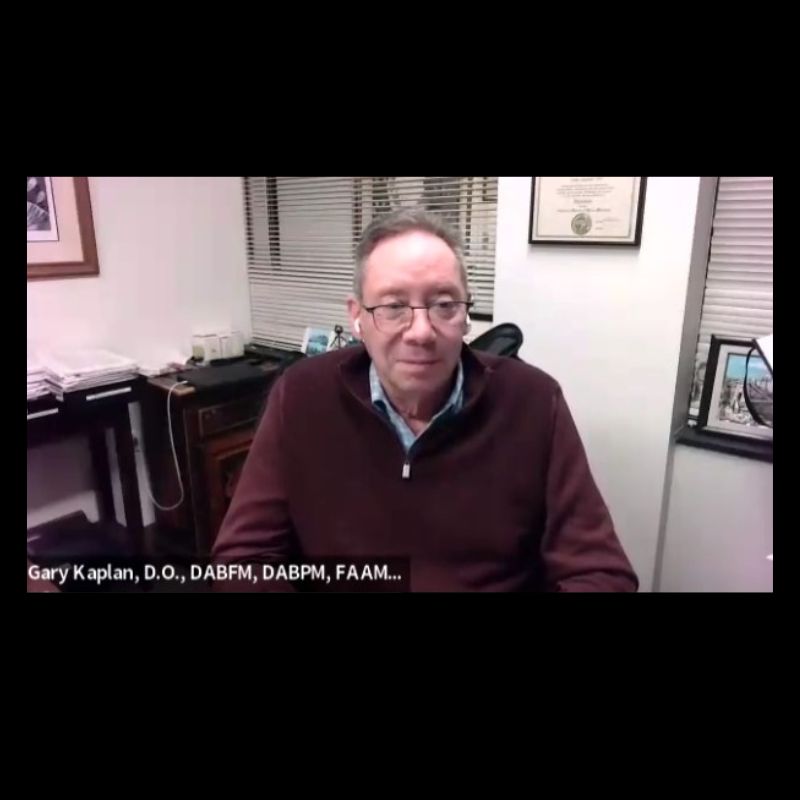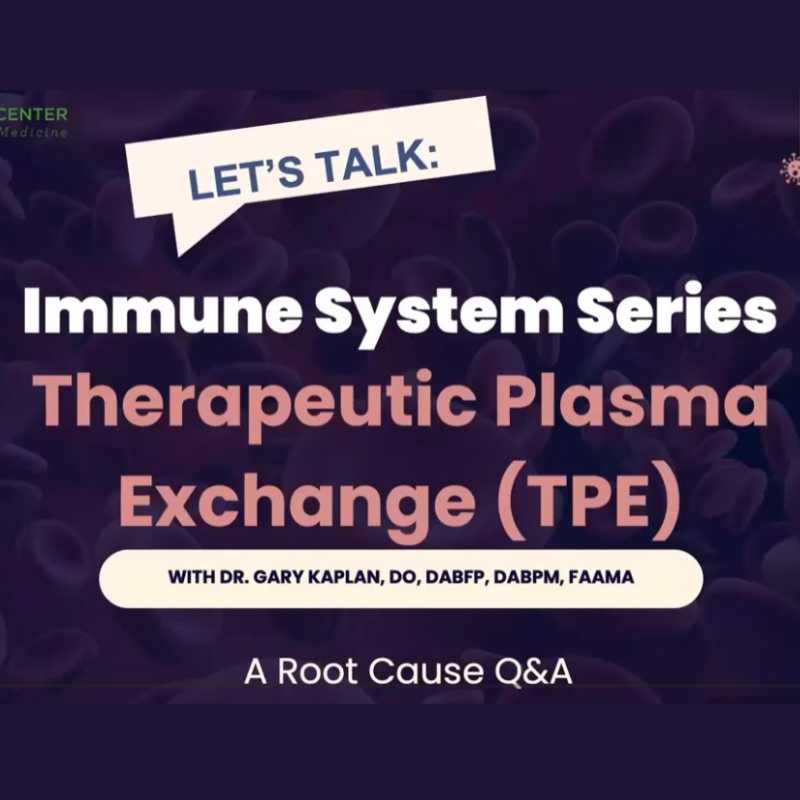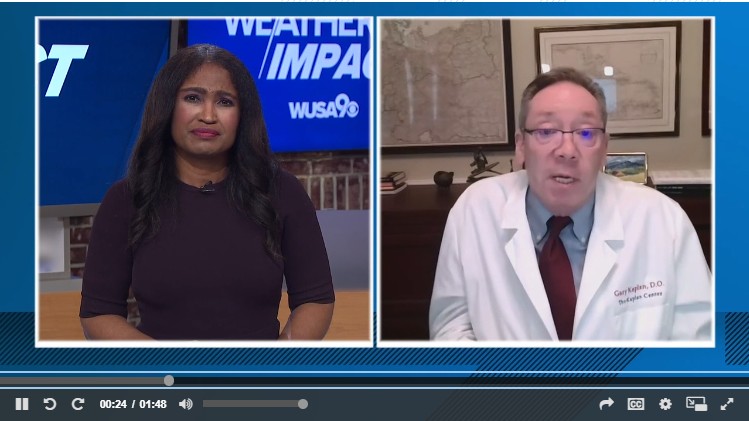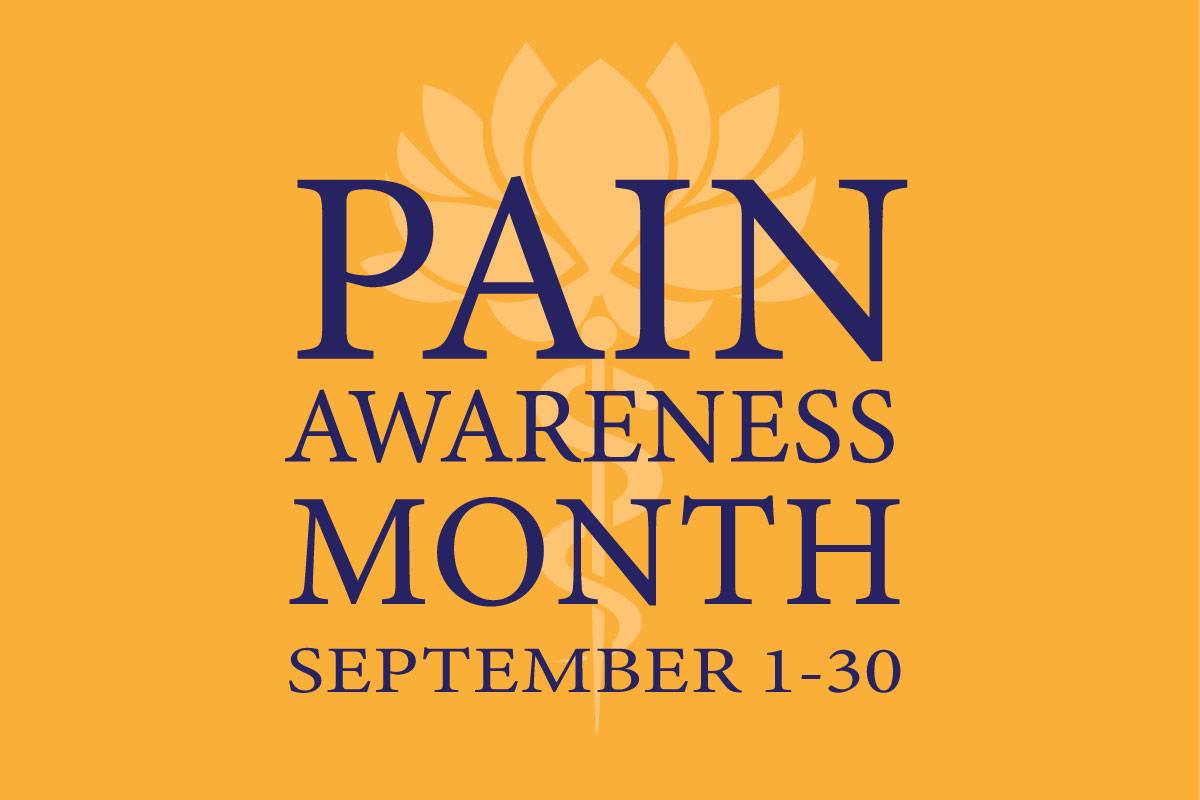
5 Ways We Can Keep Your Immune System Strong
December 10, 2025/by Kaplan Center
Want to Take Your Workout to the Next Level Next Year? These Tips Can Help
December 8, 2025/by Kaplan Center
Dr. Kaplan’s Dos and Don’ts of the Holiday Season
December 3, 2025/by Kaplan Center
Let’s Talk Webinar – A Root Cause Q&A
December 2, 2025/by Kaplan Center
Navigating Holiday Meals with Gut Issues: Simple Tips for a Comfortable Season
December 1, 2025/by Chardonée Donald, MS, CBHS, CHN, CNS, LDN
Craniosacral Therapy for TMJ | Say Goodbye to the Daily Grind
November 19, 2025/by Patricia Alomar, M.S., P.T.
From Compassionate Care to Personal Healing: A Letter to My Patients
November 18, 2025/by Kaplan Center
8 Steps to a Healthier Gut—and a Longer, Healthier Life
November 18, 2025/by Kaplan Center
Mid-Life Irritability & Fatigue Improved by Hormonal Balancing
November 13, 2025/by Lisa Lilienfield, MD
From Challenges to Change: Dr. Kaplan on Healthcare’s Biggest Challenges
October 29, 2025/by Kaplan Center
Overlooked Dangers of Mold Exposure and How to Stay Safe – Dr. Kaplan Talks to WUSA9
October 27, 2025/by Kaplan Center
Let’s ‘Fall’ Into Wellness: A Nutritionist-Approved Immune-Boosting Recipe for Cold and Flu Season
October 13, 2025/by Chardonée Donald, MS, CBHS, CHN, CNS, LDN
PANS/PANDAS – When Sudden Symptoms Signal Something More
October 9, 2025/by Kaplan Center
Beating Burnout, A Nutritionist’s Perspective
October 1, 2025/by Chardonée Donald, MS, CBHS, CHN, CNS, LDN
3 Things That Can Happen After Stopping GLP-1s
September 11, 2025/by Chardonée Donald, MS, CBHS, CHN, CNS, LDN
What Families Need to Know About COVID and Flu Season
September 3, 2025/by Kaplan Center
September is Pain Awareness Month
September 1, 2025/by Kaplan Center
Dr. Kaplan Spoke to Northern Virginia Magazine About COVID, Flu, and Immunity — Here’s What You Should Know
August 14, 2025/by Kaplan Center
“Why Do I Feel Like Crap?”: The Overlap Between Long COVID and Perimenopause
July 30, 2025/by Kaplan Center
Why People Are Turning to EMDR (and Why You Might Want to Too)
July 23, 2025/by Kaplan CenterAre you looking to improve your overall wellness?
Personalized care you can trust.
Our integrative, non-surgical treatment approach is highly successful in maintaining wellness and also treating chronic pain and illness. For more than 30 years, we have delivered superior, cutting-edge health care in the Washington, DC area.
QuickLinks
Contact Information
Tel: 703-532-4892
Fax: 703-237-3105
6829 Elm Street, Suite 300
McLean, Virginia 22101
Map It
Hours of Operation
Mon – Thu : 8 am – 5 pm, ET
Fri : 8 am – 12 pm, ET
When Going Gluten-free Makes Sense
/in Nutrition/by Kaplan CenterGluten is a general name for the family of proteins found in the grains wheat, barley, and rye. Glutenin and gliadin, the 2 main proteins in gluten, are responsible for giving dough its characteristic elasticity and glue-like structure before the baking process and its wonderful texture and rise when baked.
Most people can eat gluten without any problem. However, for some, even the smallest amount of gluten can trigger a wide array of inflammatory reactions in the body when consumed, with symptoms sometimes lasting for months. Sensitivity to gluten presents across a spectrum, sometimes being the primary factor that is making a patient ill, but more often it exacerbates an existing pain condition.
Gluten is directly correlated with 3 major gastrointestinal disorders: Celiac disease (CD), non-celiac gluten sensitivity (NCGS), and wheat allergy.
Celiac disease
Celiac disease is an autoimmune disorder that is triggered by eating foods that contain gluten. Even miniscule amounts can trigger a reaction. Celiac disease is characterized by the damage and atrophy of the villi of the intestinal cell lining. The villi are finger-like extensions that extend from the wall of the small intestine into the lumen. The primary role of these villi is to absorb nutrients from the foods we consume. This damage leads to an increase in the space between cells, allowing food particles to enter the bloodstream (also referred to as intestinal permeability or “leaky gut”), and triggers an inflammatory immune response. CD can directly cause atopic problems, nutritional deficiencies, and anemias. Research also confirms that individuals with CD have a higher risk of developing other autoimmune disorders, such as Type 1 Diabetes, Sjogren’s Syndrome, Rheumatoid Arthritis, and Hashimoto’s thyroiditis.
Celiac disease is also genetically linked, thus, anyone with a relative who has CD is at higher risk to develop it themselves. You can be tested for celiac disease just as you can be tested for food allergies and food sensitivities.
If you have been diagnosed with Celiac disease, going gluten-free is a must. Usually, after following a gluten-free diet (GFD) for just one month the health of patients with celiac disease improves dramatically.
Non-celiac gluten sensitivity
People with non-celiac gluten sensitivity share many of the symptoms common to celiac disease but do not test positive for CD. Once gluten is eliminated from one’s diet, patients with NCGS will quickly see an improvement in several symptoms.
Wheat allergy
Wheat allergy is an allergic reaction to any number of the proteins found in wheat, not necessarily gluten. A person diagnosed with a wheat allergy must avoid eating any form of wheat to avoid triggering an immune reaction but can tolerate eating gluten found barley and rye.
Symptoms of celiac disease & non-celiac gluten sensitivity
The most common symptoms of celiac disease and gluten sensitivity are listed below. Individuals with these conditions can experience a combination of any number of symptoms and some people with CD report having no symptoms at all.
Gastrointestinal:
Extra-intestinal:
The following foods usually or often contain gluten:
Behind the label
In the last several years, we have seen tremendous growth in gluten-free products available in grocery stores and restaurants, and the number of gluten-free cookbooks has grown exponentially. In 2013, the FDA required that food manufacturers who wished to use a “gluten-free” label on their products had to limit its gluten content to 20 parts per million or less. The FDA chose this standard based on evidence that suggests that most individuals with celiac disease can tolerate “variable trace amounts and concentrations of gluten in foods (including levels that are less than 20 ppm gluten) without causing adverse health effects.”
In 2020, “gluten-free” labeling requirements extended to fermented or hydrolyzed foods. The FDA’s rule requires that manufacturers themselves keep records to support the “gluten free” claim.
Going gluten-free can be tricky; federal law requires wheat and the other top food allergens (milk, eggs, fish, Crustacean shellfish, tree nuts, peanuts, wheat, sesame, and soybeans) to be clearly identified on food labels, but there are no regulations regarding barley, rye, and oats. For example, if you see a label that lists malt extract, malt vinegar, malt flavoring, or brewer’s yeast, that product will contain some barley. Learning what to look for on a food label is essential!
Do oats contain gluten?
Strictly speaking, no, but oats have been found to be at risk of contamination with gluten during its production process. Gluten-free oats are available and should be labeled as such. Many people with CD can eat a small amount of gluten-free oats without a problem. A percentage of people with CD react the same way to the protein in oats as they do to gluten.
Should you go gluten-free without a diagnosis or symptoms?
Important to note is that implementing a gluten-free diet without a Celiac diagnosis or without any symptoms of sensitivity does not come without some risk. A review published in Clinical Nutrition in 2016 found people who follow a gluten-free diet are at higher risk of developing nutritional deficiencies. The reason? Many processed gluten-free foods on the market are lower in vitamins and minerals, such as Vitamin B12, Vitamin D, folate, magnesium, iron, and calcium, than their non-gluten-free counterparts.
What can you eat on a gluten-free diet?
Plenty! In addition to all of the processed gluten-free products on the market, fruits, vegetables, meat and poultry, fish and seafood, dairy, beans, legumes, and nuts are all part of a healthy, gluten-free diet.
The following grains do NOT contain gluten: rice, corn (maize), millet, quinoa, sorghum, buckwheat, amaranth, teff, flax, chia, and nut flours.
In sum, a gluten-free diet is necessary for all patients with celiac disease and highly recommended for patients with a commonly associated autoimmune disorder (Sjogren’s disease, Hashimoto’s thyroiditis). Our experience at the Kaplan Center has also shown that patients with non-Celiac, inflammatory conditions, such as arthritis, chronic muscle pain, chronic fatigue, and fibromyalgia, also see great improvements in their health when implementing a gluten-free diet.
Learning how to dissect food labels and understanding what ingredients indicate the presence of gluten is the key to staying gluten-free! By eliminating your exposure, a GFD can provide a clean slate to curb the cycle of inflammation.
If you are experiencing some of the symptoms above and have not been able to find resolution, please give us a call and make an appointment. We’re here to help you get to the root cause of your symptoms so healing can begin. Call 703-532-4892.
We are here for you, and we want to help.
Our goal is to return you to optimal health as soon as possible. To schedule an appointment please call: 703-532-4892 x2
5 Ways to Treat a Migraine without Drugs
/in Treatments/by Gary Kaplan, DOAs migraine sufferers will attest, a migraine headache can be caused by any number of factors, meaning that there is no one-size-fits-all remedy. Therefore, keeping an open mind and exploring some alternative treatments could actually be the key to becoming migraine-free. Fortunately, people seeking migraine relief have a wide range of treatments available to them, outside the realm of conventional medicine, that are clinically-proven to help reduce migraine frequency and severity.
Here are 5 drug free migraine treatments that can help keep your migraine at bay:
1. Craniosacral Therapy — By using a gentle, “light-touch” to help release both emotional and physical imbalances that have been stored in the body’s membranes and connective tissue, craniosacral therapy allows the body to respond and relax. Practitioners trained in craniosacral therapy are able to feel and monitor changes in the body by placing their hands in the areas that are the source of dysfunction, following the body’s cues as it works to release the tensions that are causing pain. Over time this non-invasive touch helps decrease the symptoms of headache and migraine.
2. Acupuncture — According to a review of 22 clinical trials studying more than 4,000 migraine sufferers, acupuncture was found to be as effective as medication – and sometimes even more effective than medication – for preventing migraines.
Questions? Give Us a Call!
703-532-4892 x2
3. Nutritional Supplements — People who suffer with frequent migraines often look to vitamins and/or supplements in place of prescription medication. Riboflavin (vitamin B2), magnesium, and coenzyme Q10 (CoQ10) have all demonstrated protective effects against migraines.
Although side-effects are generally milder than those from prescription medications, supplementing is not risk free. Make sure to buy from a reliable source and talk to your doctor about dosages and possible interactions with other medications.
4. Trigger Point Therapy — Sometimes headache pain can be caused or worsened by trigger points or a strain/sprain located in the neck. If this is the case, trigger point injections can be very effective in relaxing tight areas in the neck and back, thereby reducing the incidence and severity of migraines.
5. Osteopathic Manipulative Therapy — Osteopathic Manipulative Therapy (OMT), also known as Osteopathic Manipulative Medicine (OMM), is a non-invasive, manual therapy that relieves tense muscles, tendons, and ligaments to allow the body to work more efficiently. A number of studies have shown that the hands-on techniques used in OMT, including massage, soft tissue and muscle stretching, and joint mobilization, are particularly effective for preventing migraines.
When it comes to migraines, symptoms vary from individual-to-individual, so prevention and treatment options may have mixed levels of success depending on an individual’s medical condition, history, and specific needs. Thinking outside-the-box when considering treatment options is the best approach when searching for relief from migraine symptoms.
We are here for you, and we want to help.
Our goal is to return you to optimal health as soon as possible. To schedule an appointment please call: 703-532-4892 x2
This article originally appeared in Dr. Kaplan’s column on MindBodyGreen.com. It was reviewed and updated on 4/4/2023.
Employee of the Quarter: Robin Harris, RN
/in News/by Kaplan CenterRobin Harris, RN, has been recognized as Kaplan’s Employee of the Quarter!
Robin started working at the Kaplan Center in 1993 as a part-time nurse. At the time, the position was to supplement her massage therapy practice, but she quickly became an invaluable part of our team. We were thrilled when she joined our staff full-time.
We cannot say enough about Robin. In addition to her exceptional nursing skills, Robin exemplifies all the qualities that make an outstanding nurse – compassion, dedication, attention to detail, empathy, and the ability to collaborate and to communicate with both her patients and her co-workers.
Robin states that she truly loves supporting patients while they are healing, and her patients adore her. While she is challenged to keep up with Dr. Gary, she welcomes the opportunity to learn something new every day.
When she’s not at the Center, Robin enjoys being outside and visiting with friends and family (especially the four-legged ones)!
Congratulations, Robin, and thank you for all you do!